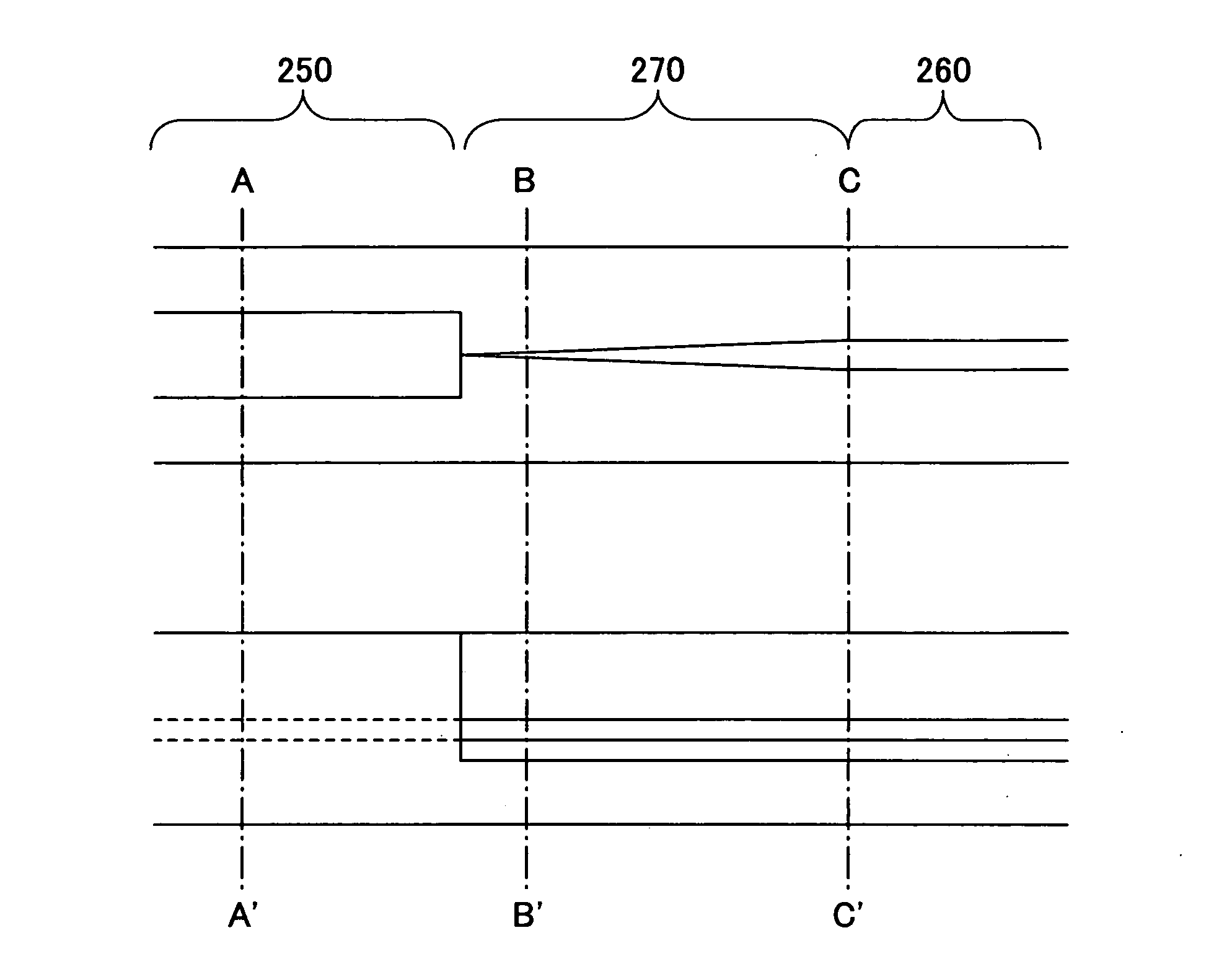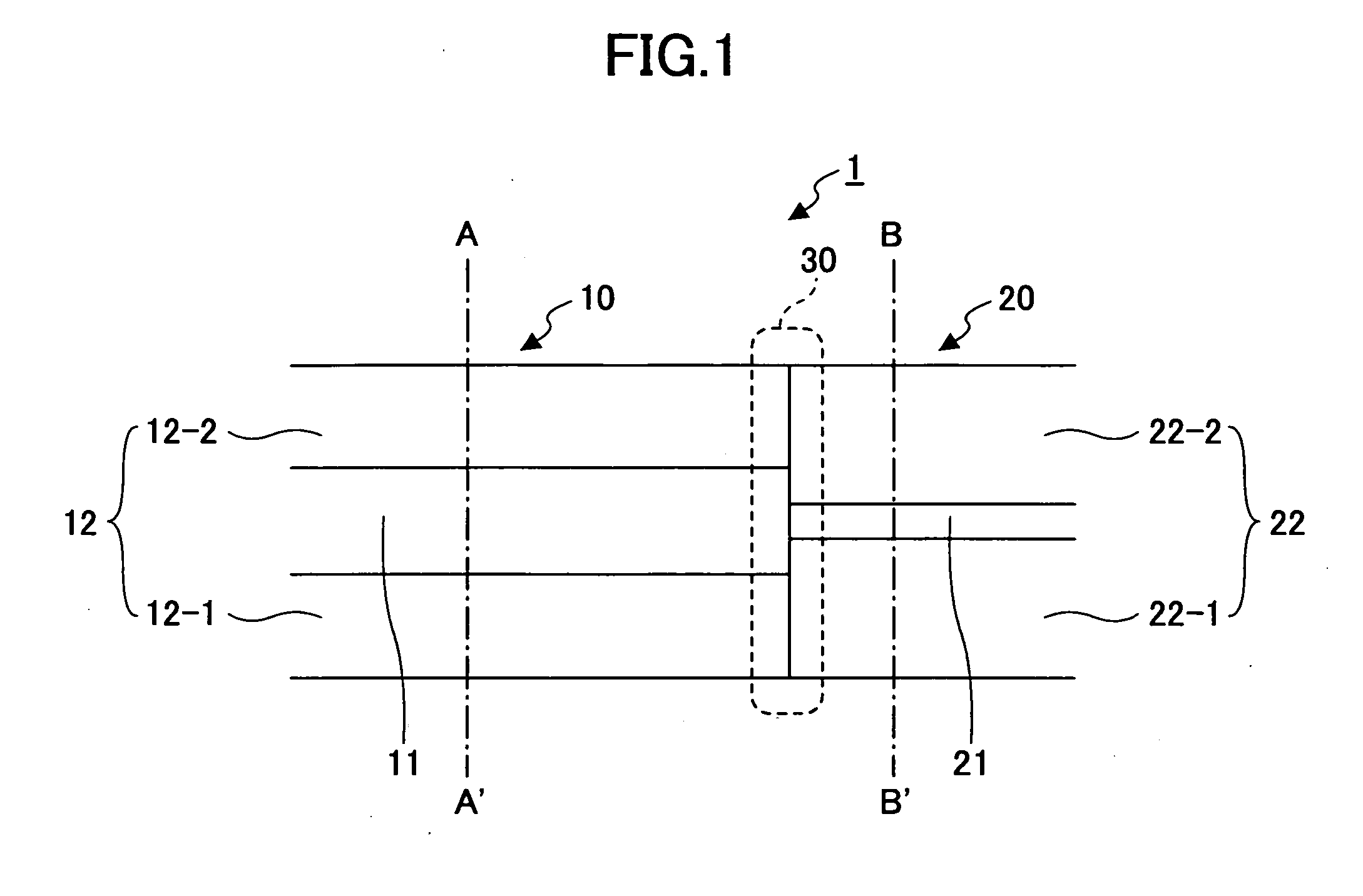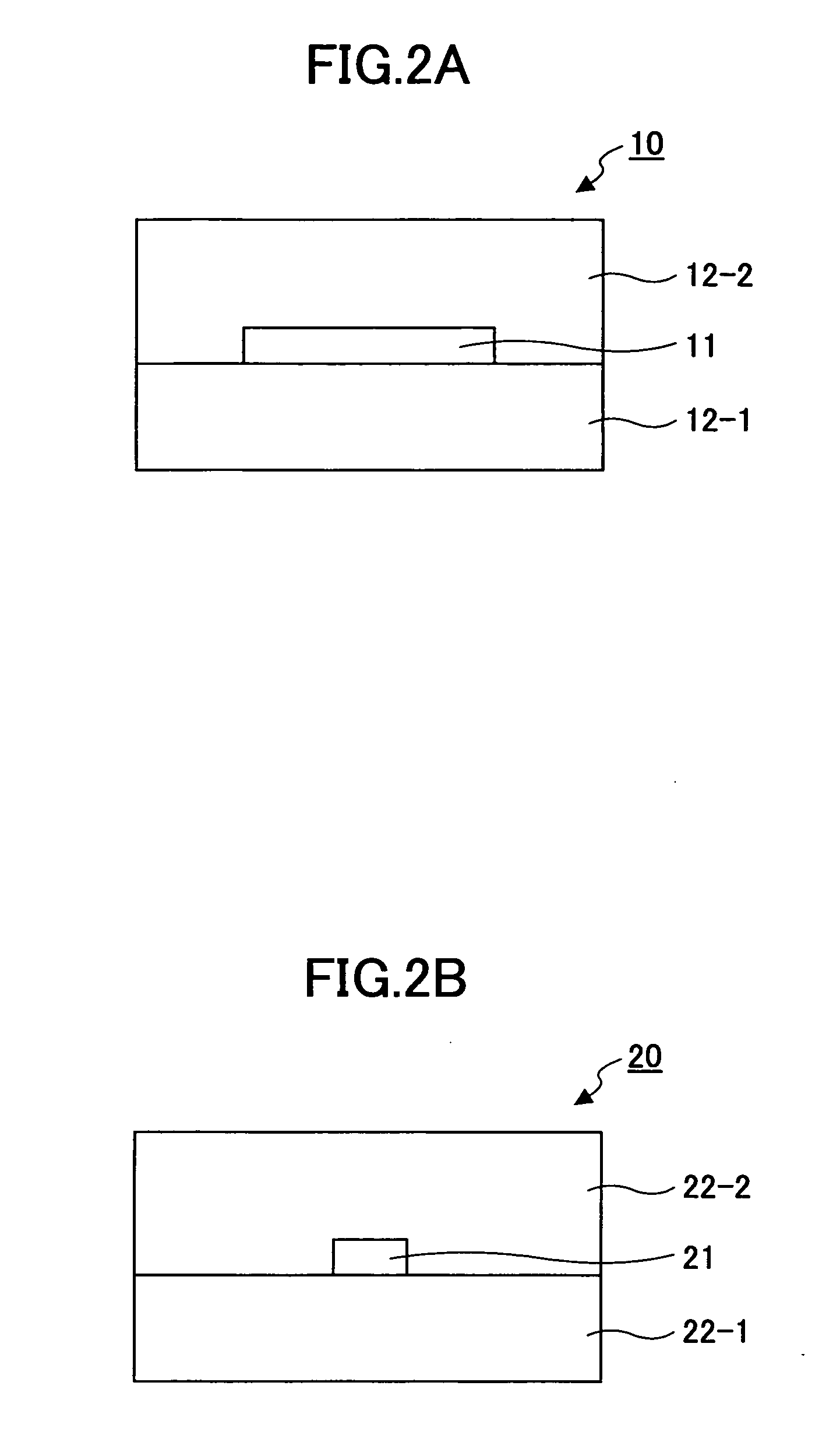Optical integrated device and optical control device
a technology of optical control device and integrated device, which is applied in the direction of optical waveguide light guide, optical elements, instruments, etc., can solve the problems of large device size of silicon-based waveguide, inability to meet high integration, and inability to absorb light scattering, etc., and achieve easy fabricability of optical coupling parts and low loss
- Summary
- Abstract
- Description
- Claims
- Application Information
AI Technical Summary
Benefits of technology
Problems solved by technology
Method used
Image
Examples
first embodiment
[0062]FIG. 1 is a sectional view of an optical integrated device 1 according to the present invention. Referring to FIG. 1, the optical integrated device 1 includes an optical waveguide 10 and an optical waveguide 20 that propagate light. The optical waveguides 10 and 20 are formed and coupled to each other on the same substrate. The optical waveguide 10 includes a core 11 and a cladding 12. The core 11 is higher in refractive index than the cladding 12, thereby confining light in the core 11 using total reflection and propagating light. Further, the optical waveguide 20 includes a core 21 and a cladding 22. Light propagates in the core 21 in the optical waveguide 20 the same as in the optical waveguide 10. The optical integrated device 1 has an optical coupling part 30 at which the optical waveguide 10 and the optical waveguide 20 are coupled in series. The light that propagates in the optical waveguide 10 is coupled to the optical waveguide 20 through the optical coupling part 30 ...
second embodiment
[0067]FIG. 3 is a sectional view of an optical integrated device 2 according to the present invention. The optical integrated device 2 of this embodiment shown in FIG. 3 has a configuration where three types of waveguides are integrated. Referring to FIG. 3, optical waveguides 40, 50, and 60 are connected in order in series. The optical waveguides 40 and 50 are coupled by an optical coupling part 70, and the optical waveguides 50 and 60 are coupled by an optical coupling part 80. Here, the optical waveguide 40 and the optical waveguide 60 have the same relative index difference, which is different from the relative index difference of the optical waveguide 50. According to this embodiment, the optical waveguide 50 is a high index difference waveguide, and the optical waveguides 40 and 60 are low index difference waveguides. Alternatively, however, the optical waveguide 50 may be a low index difference waveguide, and the optical waveguides 40 and 60 may be high index difference waveg...
third embodiment
[0069]FIG. 4 is a sectional view of an optical integrated device 3 according to the present invention. In FIG. 4, the same elements as those of FIG. 3 are referred to by the same reference numerals. The optical integrated device 3 integrates three types of waveguides. In the optical integrated device 3, the optical waveguide 50 is a high index difference waveguide, and the optical waveguides 40 and 60 are low index difference waveguides. Further, the optical waveguide 50 includes a curved part 51 as shown in FIG. 4. Since the optical waveguide 50 is strong in light confinement, it is possible to reduce a radius of curvature at the curved part 51. As a result, the direction of light propagation in the low index difference waveguide can be changed in an extremely minute region. In the case of FIG. 4, the optical waveguide 40 and the optical waveguide 60, which are low index difference waveguides, are linear waveguides. Alternatively, the same effect can be produced by providing the op...
PUM
 Login to View More
Login to View More Abstract
Description
Claims
Application Information
 Login to View More
Login to View More - R&D
- Intellectual Property
- Life Sciences
- Materials
- Tech Scout
- Unparalleled Data Quality
- Higher Quality Content
- 60% Fewer Hallucinations
Browse by: Latest US Patents, China's latest patents, Technical Efficacy Thesaurus, Application Domain, Technology Topic, Popular Technical Reports.
© 2025 PatSnap. All rights reserved.Legal|Privacy policy|Modern Slavery Act Transparency Statement|Sitemap|About US| Contact US: help@patsnap.com



